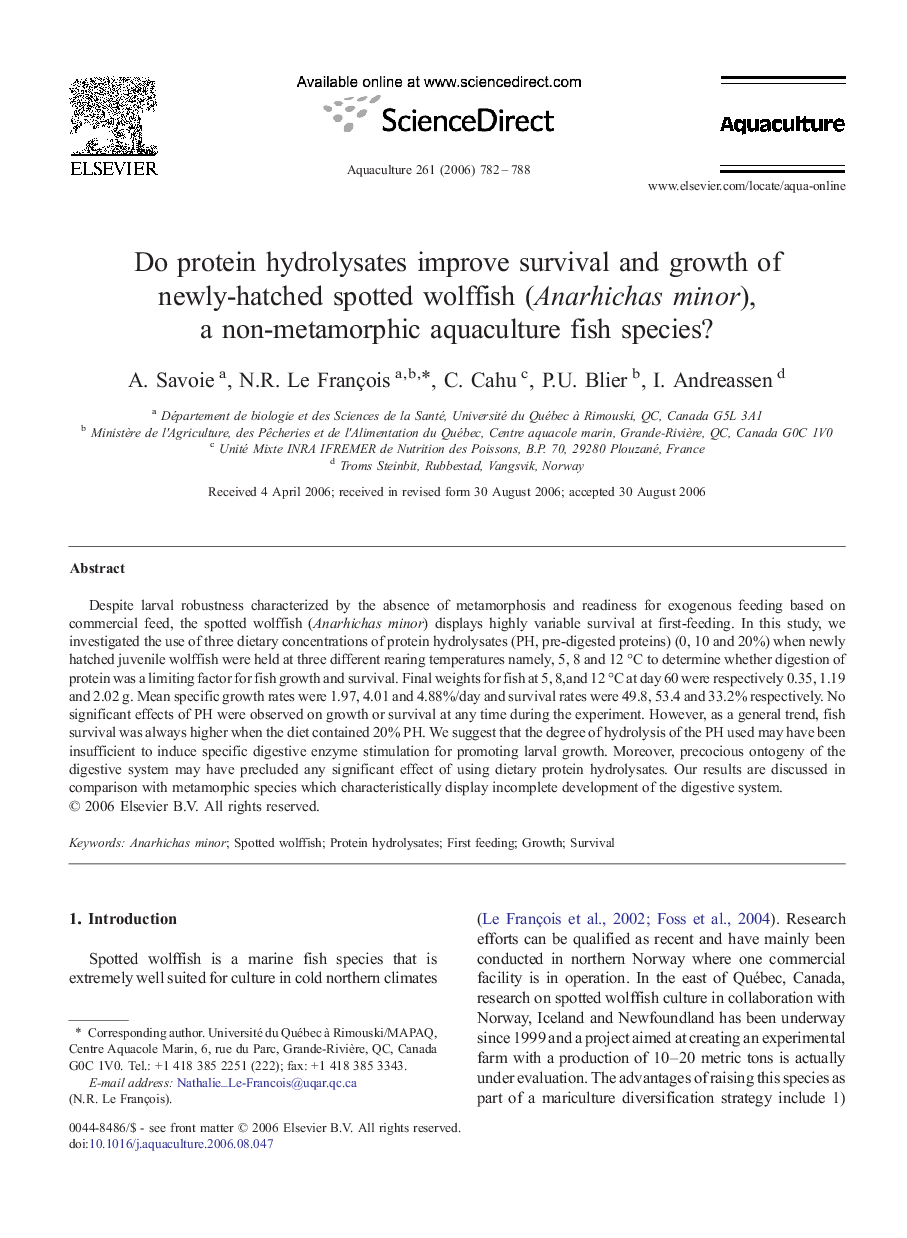| Article ID | Journal | Published Year | Pages | File Type |
|---|---|---|---|---|
| 2425444 | Aquaculture | 2006 | 7 Pages |
Despite larval robustness characterized by the absence of metamorphosis and readiness for exogenous feeding based on commercial feed, the spotted wolffish (Anarhichas minor) displays highly variable survival at first-feeding. In this study, we investigated the use of three dietary concentrations of protein hydrolysates (PH, pre-digested proteins) (0, 10 and 20%) when newly hatched juvenile wolffish were held at three different rearing temperatures namely, 5, 8 and 12 °C to determine whether digestion of protein was a limiting factor for fish growth and survival. Final weights for fish at 5, 8,and 12 °C at day 60 were respectively 0.35, 1.19 and 2.02 g. Mean specific growth rates were 1.97, 4.01 and 4.88%/day and survival rates were 49.8, 53.4 and 33.2% respectively. No significant effects of PH were observed on growth or survival at any time during the experiment. However, as a general trend, fish survival was always higher when the diet contained 20% PH. We suggest that the degree of hydrolysis of the PH used may have been insufficient to induce specific digestive enzyme stimulation for promoting larval growth. Moreover, precocious ontogeny of the digestive system may have precluded any significant effect of using dietary protein hydrolysates. Our results are discussed in comparison with metamorphic species which characteristically display incomplete development of the digestive system.
